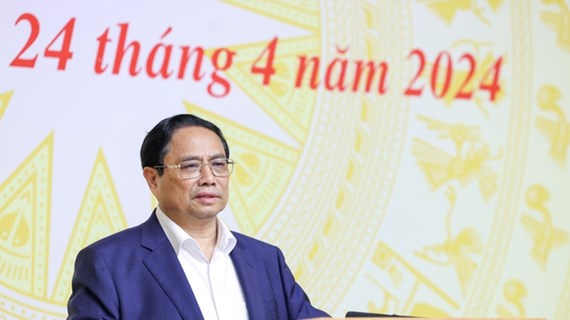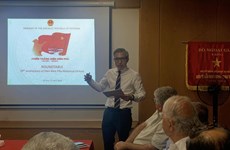Hanoi invests big in developing ethnic areas
Hanoi has consistently implemented the policy of allocating large amount of resources to the development of mountainous and ethnic minority areas in the city towards narrowing the gap between those areas and other localities, it was reported at a conference on October 3.
 At the third congress of ethnic minority groups in Hanoi (Photo: hanoimoi.com.vn)
At the third congress of ethnic minority groups in Hanoi (Photo: hanoimoi.com.vn)Hanoi (VNA) – Hanoi has consistently implemented the policy of allocating large amount of resources to the development of mountainous and ethnic minority areas in the city towards narrowing the gap between those areas and other localities, it was reported at a conference on October 3.
The third congress of ethnic minority groups in Hanoi, which took place on October 2 and 3, heard that in the capital’s investment plans both yearly and medium-term, the municipal authority has always given priority to building infrastructure facilities in the 14 communes with large communities of ethnic minority people. Those facilities are schools, medical stations, clean water supply systems, cultural houses, irrigation systems, rural roads, electricity grids and markets.
During 2013-2015, the city allocated 837.5 billion VND (36.2 million USD at current exchange rate) to 105 such projects, of which 99 projects were completed in 2015 and the remaining five in 2016.
In 2016, the municipal People’s Committee issued a resolution on the medium-term investment plan for 2016-2020, allocating 1 trillion VND to 69 projects in socio-economic development projects in mountainous and ethnic minority areas during the five-year period. The projects cover health care, transport, education and irrigation. By now the municipal budget has disbursed 850 billion VND for the projects.
Besides the investment, the city also undertook a policy on providing direct support to poor ethnic people. Since 2014 to now, the Bank for Social Policies has lent over 214.2 billion VND to ethnic minority households living under or just above the poverty line and poor students.
The ethnic minority population of Hanoi totals 107,847, with 57.7 percent from the Muong group, 17.8 percent Tay, 6.6 percent Thai, 5.85 percent Nung, 4.32 percent Thai and the remainder from 45 other ethnic groups. About 55,000 people, or 51 percent of the ethnic minority population, live in big communities in 14 communes of 5 districts, while the others are scattered in all 30 districts of the city.
Hailing the achievements made by the municipal Party committee and administration as well as the ethnic minority people in the city, Chairman of the municipal People’s Committee Nguyen Duc Chung pointed to the outstanding problems facing the ethnic areas. He said the economic growth rate in those areas remains low, the economic restructuring process is slow and unstable, and their potential in agri-forestry-husbandry is yet to be fully tapped. Besides, the authorities in some localities remain passive, tending to rely on outside support.
The official urged Party committees, authorities and people to work harder in carrying out the Party’s policies and State laws concerning socio-economic development and poverty reduction. He called attention to the preservation of the cultural identity of ethnic minority groups.
The congress agreed that efforts should be made to mobilises resources from all sources for socio-economic development in ethnic minority areas towards lifting the development level of those areas to the average in the city’s rural communes.
Mountainous communes with large ethnic minority communities will aim to maintain an average economic growth rate of over 12 percent a year from now to 2024, and increase per capita income by more than 20 percent a year to match the average level in rural areas in the same year.
Other goals are to have at least 90 percent of schools in those communes meet national standards, at least 60 percent of the local workforce get training, and 100 percent of local households access clean water meeting urban standards.
In a speech at the congress, Minister-Chairman of the Committee for Ethnic Minority Affairs Do Van Chien affirmed that the entire political system has invested greatly in the comprehensive development of mountainous and ethnic minority areas.
He asked the congress to discuss ways to fully tap the potential and advantages of mountainous and ethnic areas in Hanoi towards creating new livelihoods and production chains, suggesting the use of suitable mechanisms and incentives on land, vocational training, credit and market./.













